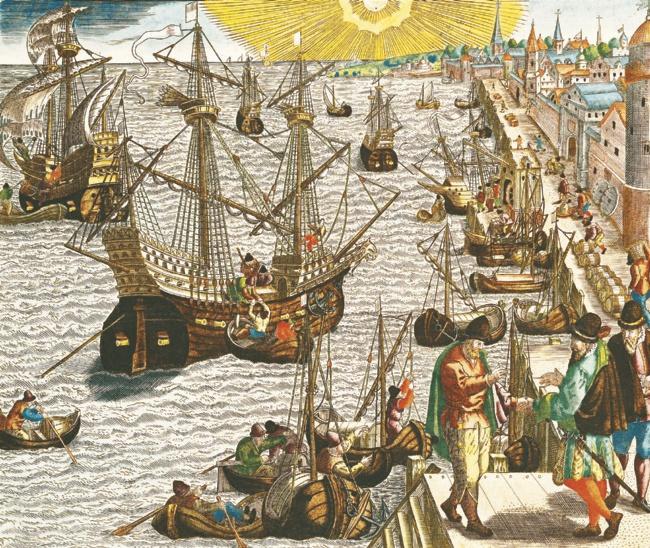
2 minute read
The Portuguese trading empire
source 12 subquestion
Ships leaving Lisbon bound for the New World. Engraving by Theodor de Bry at ‘America Tertia Pars ...’ 1592.
Henry the Navigator
The Portuguese were the first Europeans to set off on long sea voyages for the purposes of trade. In the fifteenth century, Portuguese Prince Henry the Navigator provided the money and ships to make voyages of discovery. Despite his nickname, he himself was not a seaman but he employed the best sailors and compiled all the available knowledge. He expected to earn vast trading profits and also wanted to discover the legendary kingdom of Prester John, a Christian kingdom that was supposed to be in the Indies. It was a place that featured in many stories. Prester John was said to be a mighty king who ruled over a prosperous area between the Islamic and pagan empires. Henry the Navigator hoped to find a Christian ally in Prester John, one who could help him compete with the Muslim merchants who controlled the trade with the Indies. The first explorers left from Portugal. The Canary Islands and the Cape Verde islands were discovered. Because the South Atlantic was largely unknown, the sailors kept the coastline in sight. The Portuguese explorers established forts on the African coast. This enabled them to take on supplies of fresh food and water. They also began to trade in gold and slaves. All of the information they discovered about the route along the coast of Africa had to be kept secret. It was only to be available to the Portuguese. In 1488 Bartholomew Diaz rounded the Cape of Good Hope, the southernmost tip of South Africa. Vasco da Gama reached India in 1498. This gave Portugal a route to the source of the spices: it became known as the Carreira da India
The Portuguese in India
When Vasco da Gama arrived in the Indian city of Calicut, he found Arab merchants there. Negotiations with the local ruler, the zamorin of Calicut, ended in violence and Arab merchants began to sabotage the Portuguese plans. Vasco da Gama returned home with only a small portion of the goods that he had hoped to find. On the return voyage, thirty crew members died of scurvy, a disease caused by a prolonged lack of vitamin C. Only two of the four ships made it back to Portugal. Nevertheless, the sale of the products generated so much money that the expense of the voyage was amply compensated. The king was pleased and another expedition was planned. The explorer Pedro Álvares Cabral followed the route taken by Vasco da Gama but, sailing too far to the southwest, he discovered Brazil and claimed it in the name of the Portuguese king. Many Portuguese ships then followed these routes to Africa, Brazil, India and Southeast Asia. Although they never discovered the kingdom of Prester John, they did bring home luxury goods that generated a great deal of profit.









